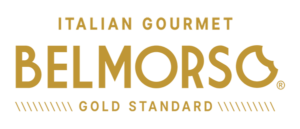Italian Bread Culture
What is Italian bread called?
Il pane, that’s what bread is called in Italy.
Here are a few handy ways to talk about it, if you needed to do so in Italian, maybe while you are on holiday.
“Mi darebbe, per favore, un chilo di questo pane?”
(Could you please give me a kilo of this bread?)
“Quanto costa un chilo di questo pane?”
(How much does a kilo of this bread cost?)
“Ci porti del pane, per favore. Grazie.”
(Please, bring us some bread. Thanks – you would say this in a restaurant.)
“Mamma mia, quanto è buono questo pane.”
(My goodness, this bread is delicious).

Italians love their pane
You can feel it in the way Italians speak about bread. I am referring to their love for this table staple.
Equally so, you can see it in the way bakeries present it, serve it, pack it, and of course make it.
And it’s not just bakeries that make the most delicious bread. While these days most households buy their bread, there are still a few families left in each region that make their own bread. It’s probably the grandma who makes it. She bakes it for her, her husband, her children and their families.
And let me tell you, if it’s as delicious as the bread my grandma used to bake for us, it’s something else.
This is not to say that bakeries do not have delicious bread, they certainly do. But there’s something different about bread made in house, with love for the family, and it’s usually a very rustic type of Italian bread.
The type of bread baked in homes varies depending on the region. In my case, my grandma used to make the Sicilian cucciddatu while Franco’s mum still makes an Apulian bread, called Pene’.
Here’s how Italians eat their pane
Independently of the type of bread baked or bought, I am pretty sure that most families enjoy their bread in the same ways, or at least in very similar ones. Here is a list:
- Italian bread is enjoyed with meals, although certainly not with pasta 🙂
- Italian bread for sandwich
- Italian bread for toast, although traditionally Italian bread is enjoyed fresh or reheated in the oven the next day
- Italian bread for appetizers
- And of course, Italian bread for bruschetta (here’s our bruschetta trio recipe)
Yet, the best way to enjoy it as soon as it’s out of the oven is to have a slice of Italian bread with olive oil, better so if it’s a special extra virgin olive oil like Novello. Drizzle some EVOO, and season with salt and pepper. If the bread is still hot, you’ll be in heaven. And nothing, and I repeat nothing, beats the flavour of that. I can still feel my grandma’s warm bread in my mouth, after nearly 30 years.
Don’t ruin your bread with cheap olive oil. If you truly want to get your hands on an EVOO that’s artisan, produced in Italy, premium quality, and high in antioxidants, you might want to try our Novello.
Novello is only available on pre-order every October, and arrives in Ireland end of November, just a few days after its production in Puglia.
If you want to pre-order it, or want to know more about it, sign up to the newsletter here and we will inform you when the pre-orders open.
__________________________________
Italian Bread History
Pane
The word pane (bread) comes from the Latin word cum panis (companion) that means sharing the same bread.
This really shows the importance of bread in Italy, but also throughout the world. Bread has been a staple of any diet from the early years of humanity.
In fact, Homer said that men are bread eaters. Whoever doesn’t eat bread is not a man but a beast, like Polyphemus, who used to eat men over bread every day.
Mentioning the Greek poet Homer is a must since anything we know about bread in Italy comes from the Romans, which in turn learned it from the Greek.
Bread and nutrition
The Romans, like the Greek, were known for baking with white flours. Indeed, most Italian bread is still made with white flours. However, I’ll also share more unique breads made with darker flours.
Independently of the flour used, bread was considered back then an important source of nutrition. Even Hyppocrates, the father of modern medicine, thought that bread was the key of health.
Nowadays, we could argue that they didn’t know all that we know today, and that’s why they thought that way. But maybe, the key factor lies in the way white flours were obtained, and also in the way the bread was made. Simplicity and low processing could be the reason why bread was considered so healthy back then, while it’s commonly considered the enemy of health and fitness today.
Let’s not forget that some of the eldest, and longest living people in the world, are found in Italy. Bread is a staple of their diets. This shows that bread is really not that bad. Read more about the healthiest diet for longevity here – Is Italian the healthiest diet in the world?
Yeast changed everything
Do you remember how I told you that the Romans learned everything about bread from the Greek? Well, that’s so much so that the Romans were indeed baking without yeast up until 200 BC. And that’s not because yeast was not known back then, but because it wasn’t known in Ancient Rome. In fact, the Egyptians had been using yeast since 5000 BC.
The Greek knew about it; and it was them who brought the secrets of bread making and bread leavening using yeast to Ancient Rome.
It was probably the Macedonian slaves who taught the rich Roman families to bake their bread in house by making the grain themselves.
Later on, when these slaves were freed, they spread their skills by working in the Roman bakeries. Not all of them were slaves, of course; other were Greek immigrants who came to Rome and opened their bakeries.

Nonetheless, even during the years when Augustus ruled Rome, all the bakeries were Greek. It was during this time that a law was established saying that the entire population needed to eat bread. And if they couldn’t afford buying it, they could make it at home using wheat.
Poor and rich bread
Before that, the poor mostly ate dark bread or pane nero. The same bread today is called pane cafone (cafone is an Italian word usually used to refer to someone without manners, rude) or pain de campagne in France. It’s a rustic bread that was made by farmers, and considered less refined.
Well, it seems that nowadays we are really going backwards. Dark bread has become the choice of health conscious people, and it’s usually the most expensive.
Along with white and dark bread, even back then the Romans had other types of bread. I’ve listed them below.
- Panis furfuris, made with bran was usually given to dogs.
- Strepticius bread, resembling crepes and pizza bases.
- Adipatus bread, which was made with lard.
- Rye bread or Ostrearius bread was eaten with oysters. This is still served with oysters today.
- Alessandria bread, cooked on skewers.
- Cyprus bread, known for being extra healthy.
- Nauticus bread, which was a rusk-like bread eaten by sailors.
- Panis Militaris was eaten by Soldiers and was a cracker-like bread, made to last longer.
- Seeded breads were very loved by the Romans, and included anise, cumin, fennel seeds, sesame seeds and poppy seeds.
- They even had legumes bread.
Bread for everyone
Notwithstanding the different types of Italian breads back then, not everyone could afford these, especially during the plague in the 1600s.
It was later in the 1800s, thanks to the Industrial Revolution, that bread became accessible to most people by making its production simpler and faster through the use of machines.
Bread became so accessible that is seems it was what most of Italians ate back then. In fact, they ate about 1 kilo of bread per person per day, according to this excellent video I found on YouTube by Professor Marino Niola.
I am sure you are thinking that’s so much bread, it’s impossible. And that’s normal to think when with time we have become accustomed to eating less and less bread. Nowadays, Italians eat about 230 gr bread per day, according to Statista.

The 34 Best Italian Bread Types You Need to Try
The list I initially compiled was much longer, 70 in total, out of all the 250 Italian bread types that exist. So here’s what to expect from this section.
As per this article’s title, I’ll share a list of the best 34 Italian bread types to try. I’ll also tell you the region, a few interesting facts, and how to eat them. And for certain breads, I’ll even give you the recipe.
In addition to that, I will also list the names of the other 36 types of Italian bread that are worth trying, if you get the chance.
In the list you will see that some of these breads are protected with a DOP or IGP designation, which means they are really special.
Let’s start, now.
1. Pane di Patate di Pignone

This bread was born as a poor one, mostly baked in households, hence the mix of flour and potatoes. Nowadays, it’s usually baked in a circular shape weighing around 500 gr. Its crust is golden and very flavourful, while the inside is soft and airy. It’s produced in Pignone, hence the name, in the province of La Spezia.
How to eat it: with hams, cold cuts of meats, and cheeses.
Other three types of Italian bread to try in Liguria are: Libretti, Pane Martino and Pane di Chiavari.
Pane from Piemonte
If you are on holiday in Piemonte, you should try these other types of Italian bread: Biova and Panet.
2. Pane Valdostano
 This is a sweet one made with honey, chestnuts, walnuts, raisins, and apples. It’s in fact the sweet version of the popular black rye bread they make in this region, and it was initially only prepared during the holidays.
This is a sweet one made with honey, chestnuts, walnuts, raisins, and apples. It’s in fact the sweet version of the popular black rye bread they make in this region, and it was initially only prepared during the holidays.
How to eat it: with hams and cheeses, or with jam.
Here’s the recipe by a local, Sabrina Pignataro.
3. Pane di Segale Nero or Rye Bread
 The origins of this bread are poor, so poor that the bread started being prepared in large stables and then baked in public ovens. The interesting thing is that it was baked at the beginning of the year and stored for the entire year. It was so dry that to eat it you would need to dip it into water, wine, or milk.
The origins of this bread are poor, so poor that the bread started being prepared in large stables and then baked in public ovens. The interesting thing is that it was baked at the beginning of the year and stored for the entire year. It was so dry that to eat it you would need to dip it into water, wine, or milk.
This tradition has actually been resumed in 2015, and many towns are now preparing and baking their rye bread for the year in those same ovens used in the past.
Nowadays, this bread is also commonly found in bakeries, where it’s baked daily using half rye flour and half wheat flour.
How to eat it: with your meals, even for breakfast, as it’s considered a healthier bread, giving that rye flour has a lower glycemic index.
Pane from Valle D’Aosta
Another type of Italian bread to try while in Valle D’Aosta is called Miassa, and it’s actually a flat Italian bread.
Pane from Lombardia
We have now moved to the region of Lombardia. Here I suggest enjoying the three types of Italian bread which follow, and if you can a fourth one named Maggiolino (its name is taken from the iconic German car).
4. Michetta or Rosetta
 This is a popular one throughout Italy. It’s made with flour 00, and has a shape resembling a rose, which explains the second name – rosetta (meaning small rose).
This is a popular one throughout Italy. It’s made with flour 00, and has a shape resembling a rose, which explains the second name – rosetta (meaning small rose).
Back in 1700 and for the years after, it was a bread enjoyed by factory workers.
How to eat it: with just a few slices of high-quality Mortadella Bologna.
And if you want to try making it at home, here’s the recipe by Yes Milano.
5. Pane di Como

When you think of Como, you probably think about extraordinary natural beauty. And it seems that this bread is as extraordinary in taste. Originally called il Pann de Comm, its crust is very crunchy and flavourful, and equally so is its soft inner airy crumb.
The secret to making this is the biga, a pre-fermentation process used to bake many types of Italian breads. Do not mistake this for a sourdough starter though, as they only use commercial yeast instead of wild yeast. The other key ingredient is malt.
How to eat it: with local hams and cheeses like Lariano or Nostrano, but also with jams.
6. Pan Tramvai
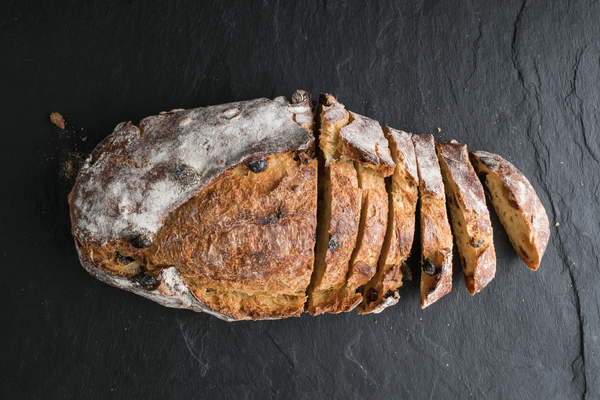 This is another sweet bread that uses a lot of raisins in the recipe. Its origin is very sweet, or maybe so for me because I love trains and other similar means of transport.
This is another sweet bread that uses a lot of raisins in the recipe. Its origin is very sweet, or maybe so for me because I love trains and other similar means of transport.
Considering the name, you should have guessed that its origin is linked to the local tram. In fact, Pan Tramvai started being baked exclusively to be served to the Tram passengers towards the end of 1800’s.
The conditions of travelling at those times were not like we know them today. The passengers would be practically lying on top of each other for long hours, even days. Yet, there was a large number of people who could not afford the tram ticket. Instead, they would buy a piece of Tramvai bread, which was high in calories and sugar, and the bread would give them the energy to walk to their destination.
7. Chifel
 Are you thinking that these look like cornetti or croissants? Well, they do. However, they are not croissants, in fact there’s no butter nor eggs in the dough. The dough ingredients include the usual ingredients used to make other types of Italian bread plus olive oil.
Are you thinking that these look like cornetti or croissants? Well, they do. However, they are not croissants, in fact there’s no butter nor eggs in the dough. The dough ingredients include the usual ingredients used to make other types of Italian bread plus olive oil.
These apparently come from Vienna but have become traditional in Trentino, which borders with Austria on the north-east.
How to eat it: perfect for breakfast enjoyed with butter, jam, and a glass of milk; or with a slice of prosciutto crudo or bresaola; you can also enjoy them with veal fillets or stews.
8. Schüttelbrot or Pane Croccante di Fiè
This crunchy and dark rye bread is ideal to be stored for longer periods. It’s very aromatic thanks to the use of cumin, fennel seeds, and fenugreek. Some versions also include dry fruit.
It’s flat and breaks like a cracker, it originated in the countryside among farmers, and its name means shaken bread. This is due to the way it’s prepared; the dough is shaken and beaten with hands until the round shape is obtained.
How to eat it: with local hams and cheeses, in particular speck.
Other shapes from Trentino
Another delicious type of Italian bread you should try while visiting Trentino Alto Adige is Pagnotte Venostane which come in a gorgeous duo, like a couple of bread rolls.
Pane from Friuli Venezia Giulia
We are now in Friuli Venezia Giulia where we really want to taste these three breads: Grispolenta, Pan di Sorc, and la Biga Servolana.
9. Grispolenta
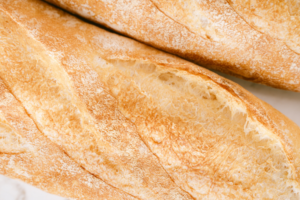
This is a bread that resembles a tick long grissino (bread stick), in fact, it’s very crunchy. It’s made with corn, flour 0, water, olive oil, yeast, salt and lard. The recipe is a very easy one.
Grispolenta is an old Italian bread type but because it’s so tasty it is still produced and sold to this day.
How to eat it: slice it, and fill it with a high quality Parma ham.
10. Puccia di Cortina
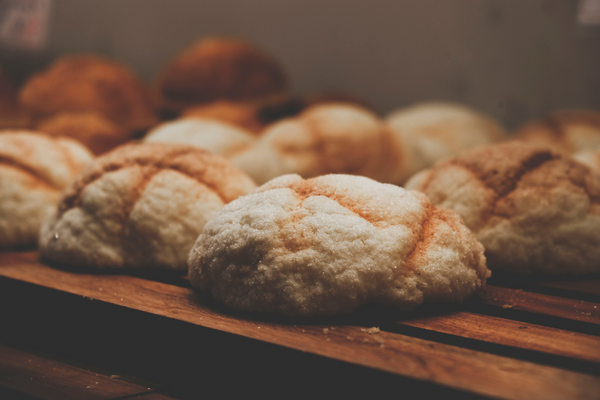 This is another dark bread very popular in the mountain area of Cortina d’Ampezzo, renowned for its ski resorts. You can also find it in the Dolomites.
This is another dark bread very popular in the mountain area of Cortina d’Ampezzo, renowned for its ski resorts. You can also find it in the Dolomites.
It’s dark because it contains some rye flour, and it comes in two versions – a soft puccia and a dry puccia. Typically, it’s enriched with cumin, fennel seeds, fenugreek, and a special oregano that grows in the area.
How to eat it: enjoy it the same way you would in the mountains, slightly warm and filled with a local ham and cheese, or with the widely available prosciutto crudo and asiago.
When in Venice, or in its region, you’ll need to also taste these two unique types of Italian bread: Cioppetta Veneta and the Bovoli.
Pane in Emilia Romagna
We are not stopping in Emilia Romagna, as we have many more regions to visit. However, if you are spending more time in this Italian region, these are the types of bread you should enjoy: the Bisula and the Coppia Ferrarese IGP.
Pane in the region of Marche
Next, let’s move to the region of Marche, popular for its stunning coastal landscapes. Here, make sure you try the Crescia Sfogliata, and the Pane col Mosto.
11. Pane col Mosto

Famous in all the region, and especially in Ascoli Piceno and Macerata, it comes in a shape of a small round loaf with a cross incision at the top.
The key ingredient, as per its name, is grape must. To that you add wheat flour, olive oil, sugar, anise, and yeast. Here’s the recipe by Valle Nuova, should you wish to try it.
How to eat it: delicious with a hazelnut spread or local hams and cheeses, such as Salame Fabriano and Pecorino.
Pane from Abruzzo
The next 3 types of Italian breads you must try when in Italy are all from the region of Abruzzo. Which type of Italian bread is making your mouth salivate the most?
12. Pane Aquilano
 This is another rustic bread that tastes as gorgeous as it looks. It’s made with either flour 0 or double 0, along with wholemeal flour, water, yeast, and salt. Its elongated shape makes it a great one to share and enjoy at the table with family and friends.
This is another rustic bread that tastes as gorgeous as it looks. It’s made with either flour 0 or double 0, along with wholemeal flour, water, yeast, and salt. Its elongated shape makes it a great one to share and enjoy at the table with family and friends.
How to eat it: with main courses, local hams and cheeses like Scamorza.
13. Pane Spiga
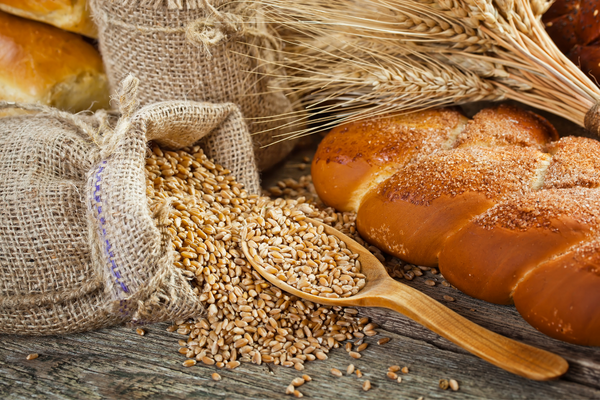 Its name comes from the grain-like incisions at the top. This Italian bread type is popular in Chieti and in the surrounding areas. It’s made using wheat flour.
Its name comes from the grain-like incisions at the top. This Italian bread type is popular in Chieti and in the surrounding areas. It’s made using wheat flour.
How to eat it: enjoy it filled with prosciutto Nero d’Abruzzo and caprino cheese.
14. Pane di Senatore Cappelli
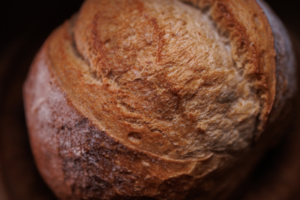
This one owns its name to the type of durum wheat flour called Senatore Cappelli. The flour and the bread are renowned for being extra healthy, thanks to the properties of this grain – high in antioxidants, and easy on your digestion.
This popular Italian bread can be baked with either sourdough or brewer’s yeast.
Senatore Cappelli grain is cultivated in the south of Italy, especially Puglia and Basilicata, but its name comes from the Senator Raffaele Cappelli in Abruzzo. The latter was responsible for the agrarian reform in Puglia; he was also the president of the International Institute of Agriculture.
How to eat it: this one is especially delicious paired with a dash of salt, a crack of pepper, and plenty of a high quality extra virgin olive oil like Novello, also rich in antioxidants.
Pane del Molise
Let’s now go to Molise, where I suggest trying these two Italian bread types: Pane Rozzo, also called Parrozzo, and Scarpelle.
Pane in Puglia
We are finally in Franco’s region, Puglia (PS: Franco is the owner of Taste with Gusto and Belmorso).
These are the two types of Italian bread I want to highlight from this region, along with the famous Tarallini. And although the latter are more of a snack than a bread, they are still made similarly to bread. Many also enjoy them as a substitute for bread with their meals, appetizers, cheese and hams. Here’s our tarallini recipe, should you want to make them.
15. Puccia Pugliese
 The Puccia Pugliese is similar in shape to the Puccia di Cortina, however, the Apulian one is made with white flour. It has become a very trendy street food to enjoy in the region, and can be eaten with different fillings.
The Puccia Pugliese is similar in shape to the Puccia di Cortina, however, the Apulian one is made with white flour. It has become a very trendy street food to enjoy in the region, and can be eaten with different fillings.
The first puccia was made by the wood worker Giovanni Caccetta in Lecce not so long ago, in 1970’s.
How to eat it: with tuna, capers, sundried tomatoes, anchovies and cheese; or with a mix of grilled vegetables and cheese. I suggest spreading some Cannonata; or with Salame Pugliese and Caciocavallo cheese.
16. Pane di Altamura DOP

Typical from the area called Murgia and originating back in 37 B.C, this was the first bread to receive the DOP designation in 2003.
It was originally made by farmers’ wives in their homes, and then baked in public ovens.
Its key ingredient is the high quality durum wheat, along with yeast, water, and sea salt.
It has an uneven circular shape with a sort of hat in the centre; it weighs about 500 gr; it has a crunchy exterior and a soft yellowish crumb.
How to eat it: baked in the oven with ham, mozzarella, parmesan, and beaten eggs. Another traditional way is to enjoy it with a soup called Zuppa di pane Pugliese.
Pane from Basilicata
From Puglia, let’s move down to Basilicata. The two Italian bread types I’d like to highlight from this region are Pane di Cudurra and Pane di Matera IGP.
17. Pane di Matera IGP

This is famous in the city of, you probably guessed it, Matera.
Here’s an interesting fact about this Italian bread type. The yeast used comes from fruit pulp.
Pane di Matera comes in two shapes, one that’s shaped like a croissant, and another which is very similar to the shape of Pane di Altamura.
How to eat it: great for bruschetta, with Cialledda, and with local hams and cheeses.
18. Pane con la Giuggiulena

Giuggiulena is a type of sesame seeds used for nougat, this bread and other Italian delicacies. This variety is made with durum wheat, has a dark crust caused by the seeds and comes in a round shape weighing up to 2kg each. Eaten all year round, and sometimes baked with fennel seeds, it’s simply delicious.
How to eat it: with your meals, or with local hams and cheeses like a Caciotta and salami Nduja.
19. Pane di Castagne

Pane di Castagne, or chestnuts bread, is a unique Italian bread type made with chestnuts in the region of Calabria. Similarly to the Dittaino bread, this too retains its freshness for a longer period.
This one too originated as a poor bread, mostly baked and enjoyed in the countryside.
It’s made with chestnut flour along with durum wheat flour, sugar, cacao, and other usual bread ingredients.
How to eat it: delicious with just honey, but also butter and jam, or local hams and cheeses.
Here’s the recipe, courtesy of Martino.
Pane from my region, Sicily
We are leaving the Italian peninsula and going to the island of Sicily, my home region. I might be biased, but I really love Sicilian bread, and I think you’d love it too. When you visit Sicily, make yourself a favour and try these bread types: Cucciddatu, Muffoletta, Pane di Lentini, Pane di Monreale, and the three types of Italian bread I am sharing next.
20. Mafalda
 This one is one of the most popular Sicilian bread, and also my favourite. It’s shape is very unique, and the texture contrast is also so amazing. You can expect a very crunchy crust and a super soft, almost cloudy crumb (or mollica), finished with a sprinkle of sesame seeds on top. The Ferro di Cavallo, I mentioned earlier, has the same texture but comes in a different shape, that of a horseshoe.
This one is one of the most popular Sicilian bread, and also my favourite. It’s shape is very unique, and the texture contrast is also so amazing. You can expect a very crunchy crust and a super soft, almost cloudy crumb (or mollica), finished with a sprinkle of sesame seeds on top. The Ferro di Cavallo, I mentioned earlier, has the same texture but comes in a different shape, that of a horseshoe.
Sicilian kids are lucky as they get to take this to school, or enjoy it at home with formaggino cheese, and even Nutella.
How to eat it: with a high quality Parma ham and cheese for school or work; or with fried aubergines and cheese, making sure both the bread and the aubergines are still warm and the cheese is melting. Delicious!
Here’s the recipe by Dolce Salato.
21. Schiacciatelle Catanesi
 These ones are small but mighty bread rolls, very crispy, and perfect to eat as a panino or for all your scarpetta needs. By the way, scarpetta is the action of dipping bread in your plate.
These ones are small but mighty bread rolls, very crispy, and perfect to eat as a panino or for all your scarpetta needs. By the way, scarpetta is the action of dipping bread in your plate.
Schiacciatelle are made with the same flour used for the Dittaino bread, with the addition of flour 0. They have a rectangular shape, and they retain a floury crust.
How to eat it: my favourite way is with tuna, onions, cherry tomatoes, and cheese. They are also delicious enjoyed with a Caprese or a Sicilian tomato salad.
22. Pagnotta del Dittaino DOP
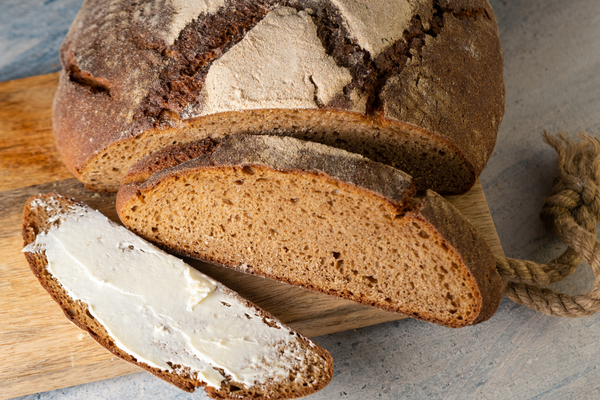 This is the largest of the three, also the most rustic and home-style. It’s a staple in the province of Enna and certain areas of Catania. To make it they use a local durum wheat, cleaned and grinded. The shape is circular, slightly oval, and it can come in either 500 gr or 1 kg.
This is the largest of the three, also the most rustic and home-style. It’s a staple in the province of Enna and certain areas of Catania. To make it they use a local durum wheat, cleaned and grinded. The shape is circular, slightly oval, and it can come in either 500 gr or 1 kg.
The name comes from the river, Dittaino River, that flows through the area where the grain grows.
How to eat it: with salads, fish, and meats. It’s also great enjoyed with a high quality EVOO, or with an olive pate’, plus local cheeses and hams.
Campania’s pane
Going to Campania soon? Then, these are the three types of Italian bread you should taste while there: Pane Cafone (great for bruschetta), Pane Tortano, and Pagnotta all’olio.
Pane in Sardegna
Let’s move to the beautiful island of Sardegna or Sardinia. Did you know that this region of Italy has the largest number of Italian bread types? Let’s discover a few together.
23. Pane Civraxiu
 This one is an old one, apparently having origins as old as 235 BC. It seems it was the widow of a Roman invader that built the first oven and helped the locals make the first Civraxiu bread, like this one.
This one is an old one, apparently having origins as old as 235 BC. It seems it was the widow of a Roman invader that built the first oven and helped the locals make the first Civraxiu bread, like this one.
Since then, this bread has been enjoyed daily across most of the island, especially in the centre and south.
It’s made with durum wheat, and includes malt. Its shape varies from area to area, in some cases it’s round and shaped like a volcano, in others it’s elongated and flatter.
How to eat it: with tomatoes as it was eaten when it was first made; great for bruschetta, with meals, and with local hams and cheeses.
24. Pane Carasau
 Pane Carasau is probably one of the oldest breads on this list, having origins as old as 1000 BC. Its name says it all. The word carasau comes in fact from carasare which means to toast in the local dialect. And that’s exactly how this bread is made so crunchy and delicious, by being toasted again in the oven after it has been baked.
Pane Carasau is probably one of the oldest breads on this list, having origins as old as 1000 BC. Its name says it all. The word carasau comes in fact from carasare which means to toast in the local dialect. And that’s exactly how this bread is made so crunchy and delicious, by being toasted again in the oven after it has been baked.
Interestingly, by changing the way you eat it, the name also changes. It’s called pane infutsu if dipped in cold water, pane guttiau if drizzled with EVOO, or pane frattau if dipped in boiling water.
How to eat it: try a lasagna made with the classic Italian meat sauce and pecorino cheese, and instead of lasagna use the pane carasau.
25. Pane Coccoi

This one has always been an Easter bread, a very rich and creative one, allowing the women who made it to show off their artistic talent. Look at those intricate designs surrounding each egg. Nowadays, it’s baked daily, and can be enjoyed throughout the year.
Its preparation is very similar to the Civraxiu bread type I mentioned earlier. It’s also made for weddings and engagement parties, in which case it has the shape of a bouquet of flowers or a heart.
How to eat it: with special meals, or with local cheeses like Biancospino Caprino.
26. Moddizzosu
 Typical in the south, this is a soft bread which retains its freshness for longer, even longer than a week. It’s not sure whether its name comes from a tool used to operate wooden ovens, or from the word moddi, which in dialect means soft and comes from the Italian word morbido.
Typical in the south, this is a soft bread which retains its freshness for longer, even longer than a week. It’s not sure whether its name comes from a tool used to operate wooden ovens, or from the word moddi, which in dialect means soft and comes from the Italian word morbido.
Its crust is darkish, thick, and rough but inside it’s super soft. Another variety of the same bread is made with potatoes.
How to eat it: with just tomatoes, as sandwich bread, for breakfast with jams or a chocolate spread.
Here’s the recipe by Marco for the potatoes version, should you wish to make it at home.
Lazio’s Pane
We are now in Lazio. Wondering what the capital and the surrounding cities have to offer? Well, really great Italian bread types, so much so that two of these have an IGP designation. Before I list them, let me tell you the two types of bread you should also enjoy while in Rome or Lazio: la Pizza Bianca, and Pane Giallo.
27. Pane di Genzano IGP

This one is a famous one from Rome, in the town of Genzano. Its dark crust is not due to the use of wholemeal flour, but to the bran flour dusted on top before the bread is baked.
Crunchy, long or roundish, with a soft fragrant crumb that smells like fresh high quality grain. Apparently it was so good, that the Prince Cesarini Sforza offered it as a gift to the Pope back in 1600’s.
How to eat it: with a local porchetta ham, or for bruschetta, or just toasted with a drizzle of a great extra virgin olive oil.
Here’s the recipe, courtesy of Ansh.
28. La Ciriola Romana

The Ciriola is a really beautiful one, in the shape of a wheat grain. It’s smaller in size than many other breads on this list, so it’s perfect to be eaten as a panino.
Remember the biga I mentioned earlier? This is needed to make this one, and it uses Manitoba flour.
The Ciriola Romana has a very old history, and a very important one. I shared this in one of our emails, that Mussolini used to control how much food each family could eat. And this bread was the main bread available at the time. Each family could only get one ciriola per member.
The Ciriola remained the most popular type of Italian bread in Rome until 1980’s. It’s produced less and less today, and many worry that it risks extinction.
How to eat it: panino with cooked beef, with mushrooms, with broccoli and sausages (see our recipe here), or with just mortadella.
29. Piadina Romagnola IGP
 There are two varieties of this delicacy – the original one and the Riminese. The main difference is that the original one is thicker and smaller in diameter, while the Riminese is thinner and larger.
There are two varieties of this delicacy – the original one and the Riminese. The main difference is that the original one is thicker and smaller in diameter, while the Riminese is thinner and larger.
For both types, the recipe includes extra virgin olive oil and lard, which is what makes this higher in calories than other Italian bread types. Its thin crispy texture makes it perfect to be eaten as a wrap but also as a base for a quick and rustic pizza.
The locals call it piè. It was Giovanni Pascoli that used the name piada in one of his poems, describing the piadina as the “bread of humanity”.
How to eat it: with prosciutto crudo and the local Squacquerone cheese, or with a chocolate spread for an indulgent snack. Here’s our simple recipe, great for lunch.
Thank you so much for making it this far. I hope you’ve been enjoying this article, and learning about the most delicious Italian bread types.
Pane from the last 2 regions: Umbria and Toscana
We only have two more regions to discuss: Umbria and Toscana. Let’s look into their best types of Italian bread with pictures.
30. Pan Nociato or Caciato

This sweet and savoury bread it’s typical from the region of Umbria. Its old tradition is tied to the popular local feast of San Martino.
In fact, it started being baked to celebrate this feast. They simply made regular bread and enriched it with walnuts, raisins, and even pecorino cheese. That’s how Pan Nociato came to be.
I believe this is the only Italian bread type on this list that is made with cheese.
How to eat it: such an Italian bread type calls for a piece of salami, or other cured hams, in my opinion. It’s also great eaten with jams or honey for breakfast.
31. Pane di Balanzano (without yeast)
Popular in Balanzano, but also Perugia and Ponte San Giovanni, this bread is made with just water, flour, and some kind of leavening agent that’s not yeast. Unfortunately, I can’t find a recipe for this one. All I know is that it is to be left leavening for over 8 hours.
How to eat it: however you like it, in substitution of other breads if you are intolerant to yeast.
While in Umbria you’ll also want to try another type of Italian bread called the Cresciole – a thin and very crunchy bread type in Italy.
Our final stop for today is the dreamy region of Toscana or Tuscany. I have a long list of types of Italian breads I suggest you try here. These are Pane di Farro della Garfagnana IGP, Semelle, Pane di Cotone, Pane di Altopascio, and my favourite: Panini al latte or milk bread rolls. The other 3 I am listing below.
Let’s end with the last 3 super delicious Italian bread types on this list.
32. Marocca di Casola
 This dark bread might take its name from the local term Marocat, which means not so soft. Indeed, this bread has a harder consistency.
This dark bread might take its name from the local term Marocat, which means not so soft. Indeed, this bread has a harder consistency.
It’s made with chestnuts flour, the only flour that could be grown in the area of the Lunigiana, where it originated. The recipe also includes potatoes, which makes it last longer.
This type of Italian bread used to be made in the countryside by farmers on a Sunday. Each household had a wooden oven, and they would spend part of the day making the bread for the week, and the rest of the week working the fields.
How to eat it: with local Caprini cheeses, honey, cured hams, or simply with a drizzle of EVOO.
33. Pane di Ramerino

It’s name comes from rosmarino, or rosemary, which is a key ingredient in this recipe. You might be surprised that this is a sweet bread, with sugar and raisins, and it also contains rosemary.
Back then, it was considered a healthy and light sweet treat, and in fact, it was prepared during Lent to be enjoyed on Holy Thursday. Today, it’s prepared throughout the year.
How to eat it: because of its sweetness and herby flavour, it pairs deliciously with salted food, like a salami or cured ham, or smoked salmon, or smoked provola cheese.
34. Pane Toscano DOP
 This unsalted bread seems to have appeared in historic records since the 16th Century. It has an elongated shape, sometimes really long, while others shorter and almost rectangular.
This unsalted bread seems to have appeared in historic records since the 16th Century. It has an elongated shape, sometimes really long, while others shorter and almost rectangular.
Strangely, as the recipe doesn’t include this ingredient, its flavour notes include that of toasted hazelnuts. And because it has no salt, it’s also called pane sciocco, because of the bland flavour.
How to eat it: given its lack of salt, this is eaten with local cured hams and cheeses, great with sheep milk cheese, as well as with meats cooked in sauce and stews.
What to pair with artisan bread?
You are probably craving bread now, I don’t blame you :). Well the easiest way to satisfy your cravings is to get yourself some local bread, preferably an artisan one. Even if it’s not Italian, it will do for now.
Here’s how I like to enjoy artisan bread, whether it’s Italian or not.
I like to enjoy it with a platter made with the following appetizers and a glass of wine:
- oven dried black olives
- stuffed chillies with olives and anchovies
- cime di rapa with a drizzle of EVOO, salt and pepper
- sundried tomato paté
- green olive tapenade
- home-style courgettes

Before we end this very long article, I thought I could answer a few common questions asked regarding Italian bread.
Italian Bread FAQ
[faq-schema id=”11609″]
Thank you again for reading so far. If you like this article, you might also enjoy this one about Panettone Cake: How to choose the best one, and this other one about Extra Virgin Olive Oil – Olive Oil or EVOO? Are you using the wrong one?
And if you would like to receive delicious recipes by email, including Italian bread recipes we’ll be making throughout this year and beyond, subscribe to our email list here.
Ciao.
